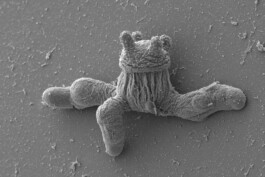



Friendship in the sea
Chemical Biology of Microbe-Host Interactions Group, Leibniz- Institute for Natural Product Research and Infection Biology – Hans Knöll Institute, in cooperation with the Electron Microscopy Center of the University of Jena
This young hydroid polyp Hydractinia echinata has just developed from a swimming larva and is only a few millimeter tall. But it is not alone, because even smaller creatures play a big role in the life of the hydroid polyps: bacteria. They live in symbiosis with the polyps and control important cellular processes in the polyp’s life cycle. But how do polyps and bacteria find each other in a marine environment, i.e. in the water? Prof. Christine Beemelmanns and her team are focusing on this question. They have discovered that the bacteria produce signaling molecules, which the swimming larvae sense and subsequently settle within their vicinity to develop to the adult polyp.
© Huijan Guo, Susanne Linde & Christine Beemelmanns

Friendship in the sea
Chemical Biology of Microbe-Host Interactions Group, Leibniz- Institute for Natural Product Research and Infection Biology – Hans Knöll Institute, in cooperation with the Electron Microscopy Center of the University of Jena
This young hydroid polyp Hydractinia echinata has just developed from a swimming larva and is only a few millimeter tall. But it is not alone, because even smaller creatures play a big role in the life of the hydroid polyps: bacteria. They live in symbiosis with the polyps and control important cellular processes in the polyp’s life cycle. But how do polyps and bacteria find each other in a marine environment, i.e. in the water? Prof. Christine Beemelmanns and her team are focusing on this question. They have discovered that the bacteria produce signaling molecules, which the swimming larvae sense and subsequently settle within their vicinity to develop to the adult polyp.
© Huijan Guo, Susanne Linde & Christine Beemelmanns